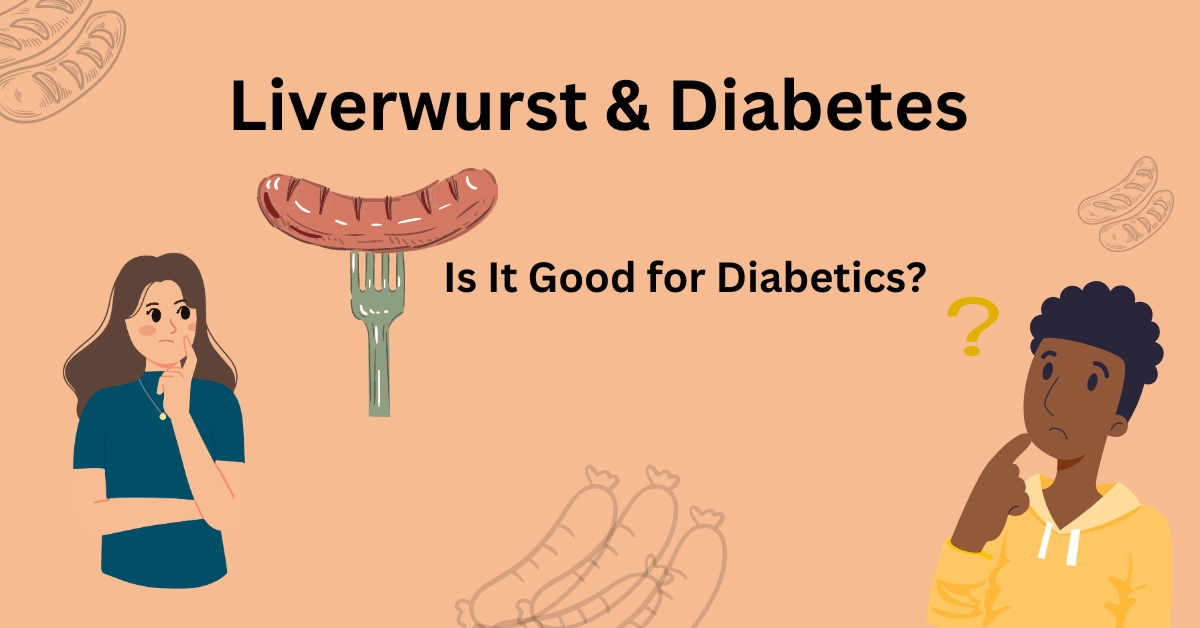Liverwurst and Diabetes: Is It Good for Diabetics?

Summary
Lverwurst is a sausage made from liver. Depending on the region, it usually contains 20-30% liver of pork, beef, or veal. It also contains large amounts of one or more (a mix of) red meats, meat byproducts, fat, and spices.
Liverwurst has a low glycemic index (GI); however, it is recommended to limit liverwurst intake due to its high red meat content, which is linked to an increased risk of diabetes.
Table of contents
Introduction
As the name suggests, liverwurst, or as it is called in German, leberwurst, is a sausage made from liver, usually containing 20-30% liver of pork, beef, or veal, depending on the region. It also contains large amounts of one or more (a mix of) red meats, meat byproducts, fat, and spices.
In this article, we’ll analyze the available data to understand whether liverwurst is safe for people with diabetes.
Glycemic Index (GI) & Nutrients
The only available data on the glycemic index values of liverwurst is presented by the USDA’s 1994-96 Continuing Survey of Food Intakes by Individuals (CSFII 1994-96) survey, also known as the What We Eat in America Survey (1, 2).
The glycemic index of liverwurst from cooked beef, pork, calve, or chicken liver is 50, falling within the range of low GI values (0-55). However, the GI values of liverwurst may change depending on the cooking method (1).
A detailed table of the GI values of liverwurst provided by the CSFII 1994-96 survey is provided below (1).
| Liverwurst (beef, calve, pork, or chicken), cooking methods | GI |
| Liverwurst, braised | 50 |
| Liverwurst, fried or broiled or sauteed, no coating | 50 |
| Liverwurst, breaded or battered, fried | 95 (high GI) |
| Liver paste or pate, chicken | 50 |
| Liver dumpling | 50 |
Liverwurst is low in carbohydrates, the nutrients that increase a food's glycemic index value: a 100g liverwurst spread contains 25.5g of total fats and 5.9g of carbohydrates, whereas liver sausage from pork meat contains 28.5g of total fats and 2.2g of carbohydrates (3).
Research shows that meals with higher fat levels may result in a lower GI value, reduced early glucose response, and delayed peak blood glucose levels.
Type 2 Diabetes
Even though liverwurst is low in carbs, it is usually processed and high in iron and fats, with 40% being saturated fats (4).
In 2023, The American Journal of Clinical Nutrition concluded a data analysis of nearly 217,000 US men and women monitored for three decades. The study found a strong association between red meat intake (both processed and not processed meat) and an increased risk of type 2 diabetes. Additionally, the researchers supported the current dietary recommendations of limiting red meat consumption (5, 6).
According to various reports, a diet high in red and processed meats, refined grains, soft drinks, fried potatoes, eggs, high-fat dairy, and low in wine, coffee, and vegetables is associated with a 2-5-fold increased risk of diabetes. In contrast, several other studies find no significant associations between red processed meat intake and diabetes risk (7, 8, 9, 10).
One study compared diets containing minimal or no red meats with diets high in red meat and found no associations between glycemic and insulinemic risk factors for type 2 diabetes, such as fasting blood sugar levels, fasting insulin, insulin sensitivity, HbA1c, etc. However, the study did not exclude that individuals with metabolic dysfunction and at risk of diabetes may respond differently to red meat intake (9).
Another study calculated the dietary advanced glycation end products (dAGEs), or glycotoxins, created during food preparation. Glycxotoxins are highly oxidant compounds that negatively affect diabetes and other chronic diseases by promoting oxidative stress and inflammation. To reduce the intake of these oxidant compounds, the dAGE database suggests consuming more fish, legumes, low-fat dairy, vegetables, fruits, and whole grains and reducing the intake of foods high in fats, such as fatty meats and highly processed foods (8). Additionally, iron has been shown to enhance the formation of ROS (reactive oxygen species) and increase the risk of oxidative stress, thus potentially affecting pancreatic beta-cell function. Iron overload may also affect insulin extraction from the liver and possibly increase glucose production (9).
Sources
- https://riskfactor.cancer.gov/DHQ/database/gi_values.csfii_94-96_foodcodes.xls
- https://www.ars.usda.gov/ARSUserFiles/80400530/pdf/csfii3yr.pdf
- https://fdc.nal.usda.gov/fdc-app.html#/food-details/173870/nutrients
- https://www.ncbi.nlm.nih.gov/pmc/articles/PMC2661797/
- https://www.medscape.com/viewarticle/998707
- https://www.sciencedirect.com/science/article/abs/pii/S0002916523661192
- https://www.ncbi.nlm.nih.gov/pmc/articles/PMC2628691/
- https://www.ncbi.nlm.nih.gov/pmc/articles/PMC3704564/
- https://www.ncbi.nlm.nih.gov/pmc/articles/PMC9908545/
- https://pubmed.ncbi.nlm.nih.gov/38525976/
